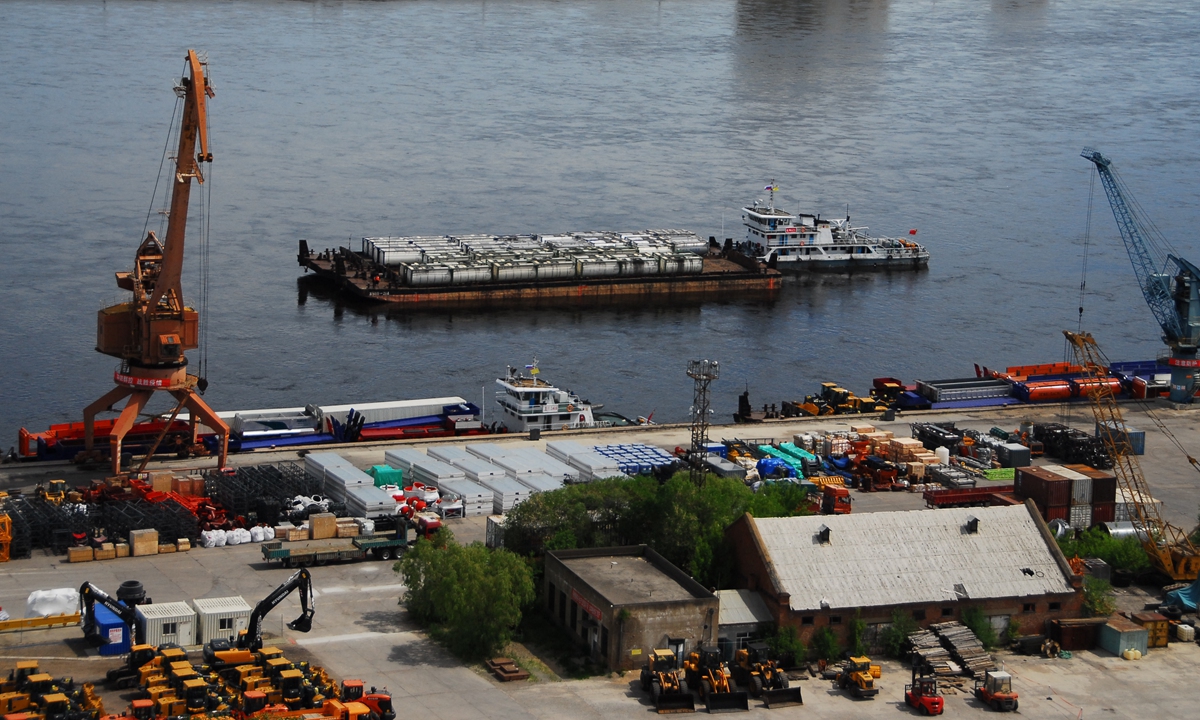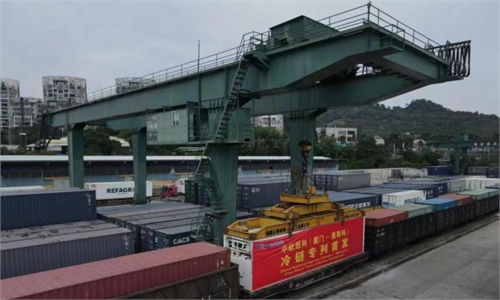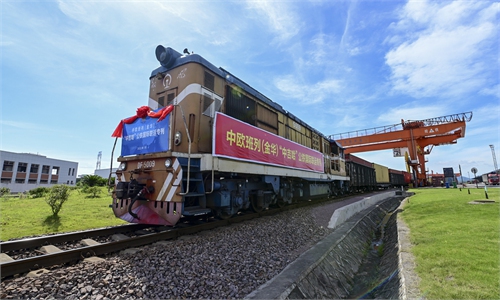China-Russia trade gains 27.8% growth in Sep, driven by high complementarity and free trade

A barge nears the Heihe port in Northeast China's Heilongjiang Province as Heihe-Blagoveshchensk, Russia cross-border dry bulk cargo water transport began on June 12, 2022. Five barges with displacements of 1,000 tons and one with 600 tons took part. Photo: VCG
China-Russia trade saw a significant growth in September, with the total import and export volume reaching $18.65 billion, a year-on-year increase of 27.8 percent, according to data published by the General Administration of Customs on Monday, maintaining strong growth momentum despite external challenges.
Experts said that the strong trade between the two countries mirrors the fact that there is a growing complementarity under free-trade arrangements which benefit both countries, ranging from energy to food, as China and Russia carry out normal economic and trade cooperation on the basis of mutual respect, equality and mutual benefit.
In September alone, China's exports to Russia amounted $7.99 billion, up 17.48 percent year-on-year, while China's imports came to $10.65 billion, rising by 35.55 percent.
From January to September, China-Russia trade reached $136.08 billion, a year-on-year increase of 32.5 percent, with both imports and exports sustaining double-digit growth, based on China Customs data.
Energy, bulk commodities and agricultural food have been the main drive for growth.
The continuous expansion of China-Russia trade once again reflects the strong complementarity of the two countries' economies, experts claimed.
For example, China's auto exports to Russia have increased significantly, filling the vacancy left by European and American firms as they quit the Russian market due to the political-driven factors, Song Kui, president of the Contemporary China-Russia Regional Economy Research Institute, told the Global Times on Monday.
In 2020, China became the largest export market for Russian agricultural products and meat, and experts predicted that the trend was set to continue.
The energy trade has gained a rising foothold in the bilateral trade as Russia is placing more focus on the East in terms of energy supplies expansion driven by the West sanctions.
Gazprom president Alexey Miller said Gazprom has been increasing gas supplies to China via the Power of Siberia gas pipeline, increasing volume by 60 percent in the first eight months of 2022, according to media reports.
With the implementation of the project, gas supply to China is set to increase every year, reaching a designed annual gas transmission volume of 38 billion cubic meters by 2025.
While risks linked to the US dollar exchange rate are mounting, China and Russia have facilitated their own currency settlement, which has greatly assisted in trade and advances the internationalization of the yuan, Song told the Global Times on Monday.
In addition, the improvement of the infrastructure cooperation between China and Russia, including the opening to traffic of the first China-Russia highway bridge, which stretches from Heihe, a border city in Northeast China's Heilongjiang Province, to the Russian city of Blagoveshchensk spanning the Heilongjiang River, in June, has boosted the flow of trade.
"China's economic development and huge market demand requires adequate, stable and diversified energy supplies while Russia needs capitals and a reliable market to support economic and trade growth, which is a win-win outcome for both sides," Song said.
Song said that China-Russia trade will maintain accelerated growth momentum, which is the result of the natural demand growth of the market economy and free trade.


